Welcome to the Champagne Gardet website
To continue your visit, you must be of legal age to purchase or consume alcohol. If there is no such legislation in your country, you must be at least 18 years old.
I certify that I am of legal ageTo continue your visit, you must be of legal age to purchase or consume alcohol. If there is no such legislation in your country, you must be at least 18 years old.
I certify that I am of legal ageAs an independent, family-owned Champagne House, our small size allows us to explore traditional working methods in the style of the artisan winemaker. But as a ‘négociant-manipulant’, we also have the opportunity to create refined Champagnes, drawing on the best of each region of the Champagne AOC.
Maintaining the quality and character of its champagnes year after year, while taking advantage of the latest technological innovations in order to master each parameter of the champagne method of vinification… All the know-how of the Gardet House lies in this precious balance between tradition and modernity – a balance that makes the specificity of the Gardet style.
Gardet’s roots stretch through the vineyards of the Champagne region. As a “Négociant-Manipulant”, and deeply rooted in this terroir, the House elaborates its exceptional cuvées from its own 5-hectare vineyard and from an additional estate of around one hundred hectares cultivated with passion, rigour and care by its partner winemakers:
Chigny-Les-Roses « Les Pécherines »
A 1er Cru village at the foot of the Montagne de Reims, the name of this commune originated at the beginning of the last century in honour of the magnificent rose garden that surrounded Louise Pommery’s country cottage. Roses flourished in the streets and in front of the vineyards, inspiring the Maison Gardet in particular, which has given the queen of flowers a central place in its history.
Ludes « Les Champs Richard »
The commune is situated on a hillside, with the forest of the Montagne de Reims to the south. Ludes is a terroir classified as Premier Cru where vines have been cultivated since the Middle Ages.
Mareuil-sur-Aÿ « La Clé »
Typical of the historic hillsides of Champagne with its expanses of vines and cellars, Mareuil-sur-Aÿ is located on the banks of the Canal lateral to the Marne, and is an ideal terroir for growing the emblematic grape varieties of Champagne.
Loches-sur-Ource « Le Val Pallas »
A plot dear to Champagne Gardet, it has been shaped from scratch to accommodate 3 hectares of vineyards, and houses a majority of Pinot Noir grapes.
Gye Sur Seine / Neuville Sur Seine : Parcelles des « Coquelin », « Chameronde », « Haut de Villers » et « Val Richez »
The Côte des Bar vineyards have a rich heritage and character thanks to the nature of their subsoil and the milder climate, as they are located in the southern Champagne region.
The work in the vineyard is essential to produce quality grapes, which will become exceptional Champagnes. This work is done according to the seasons and the growth of the vines. Most of the work is done manually to preserve the vineyard and the grapes, as well as a certain tradition that is an integral part of the region’s wine heritage.
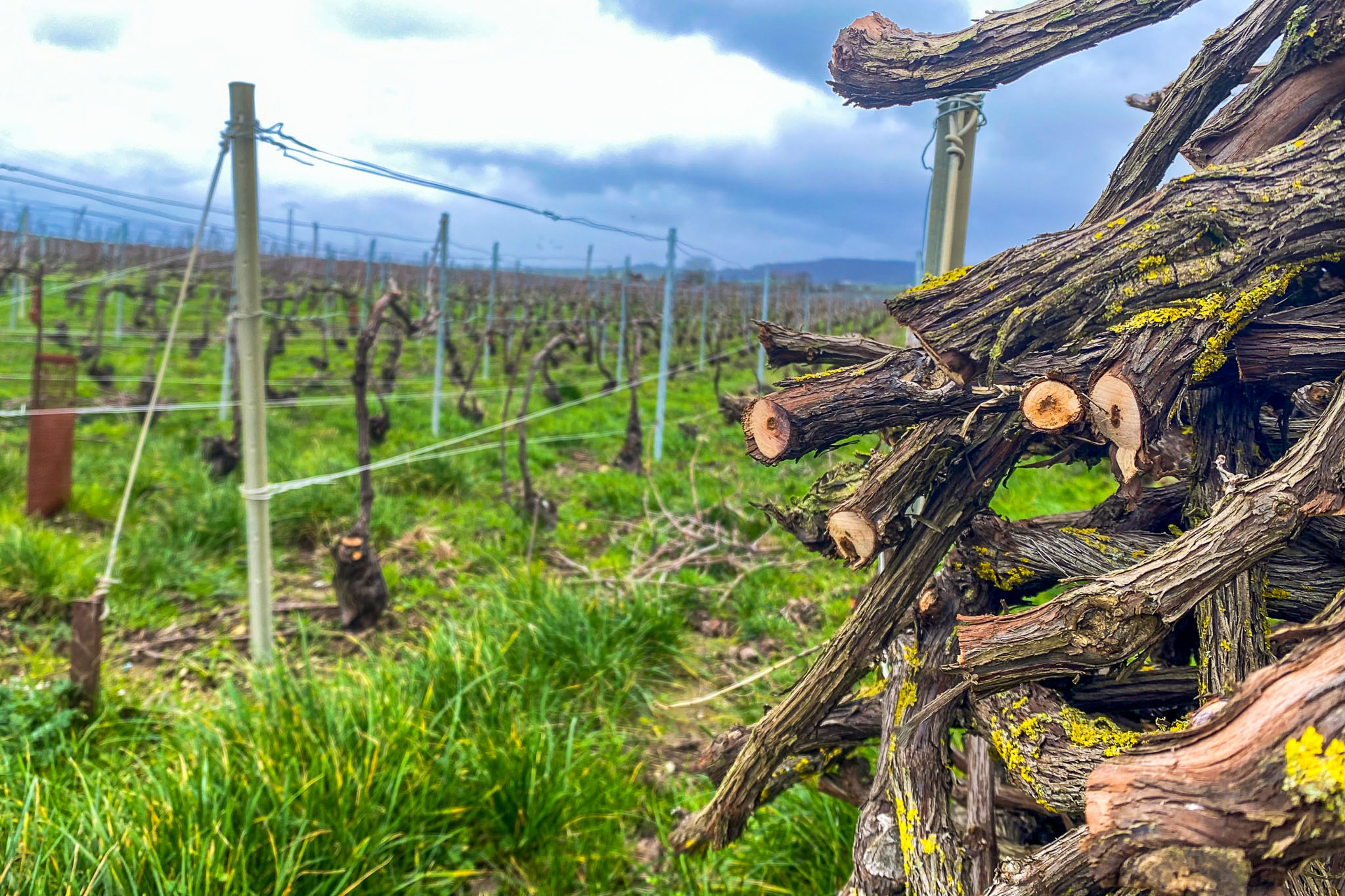
Pruning the vine is one of the most important tasks and takes place from December to March, approximately. The quality of the growth of the new vines and therefore of the future grapes will depend on pruning and on its correct execution. More precisely, pruning begins as soon as the leaves fall and allows us to select the dead wood, which will be pruned, from that which will be kept to support the growth throughout the year, in order to produce the best grapes at the next harvest. From mid-December to mid-January, there is a pause in this work to allow the plant to rest during the winter. It then resumes, continuing until the end of March. There are four different types of pruning in Champagne: Chablis, Cordon, Guyot and Vallée de la Marne. Each has its own characteristics which have a different impact on the vine. This know-how is passed on from generation to generation and is always done manually, according to the regulations of the Champagne AOC.
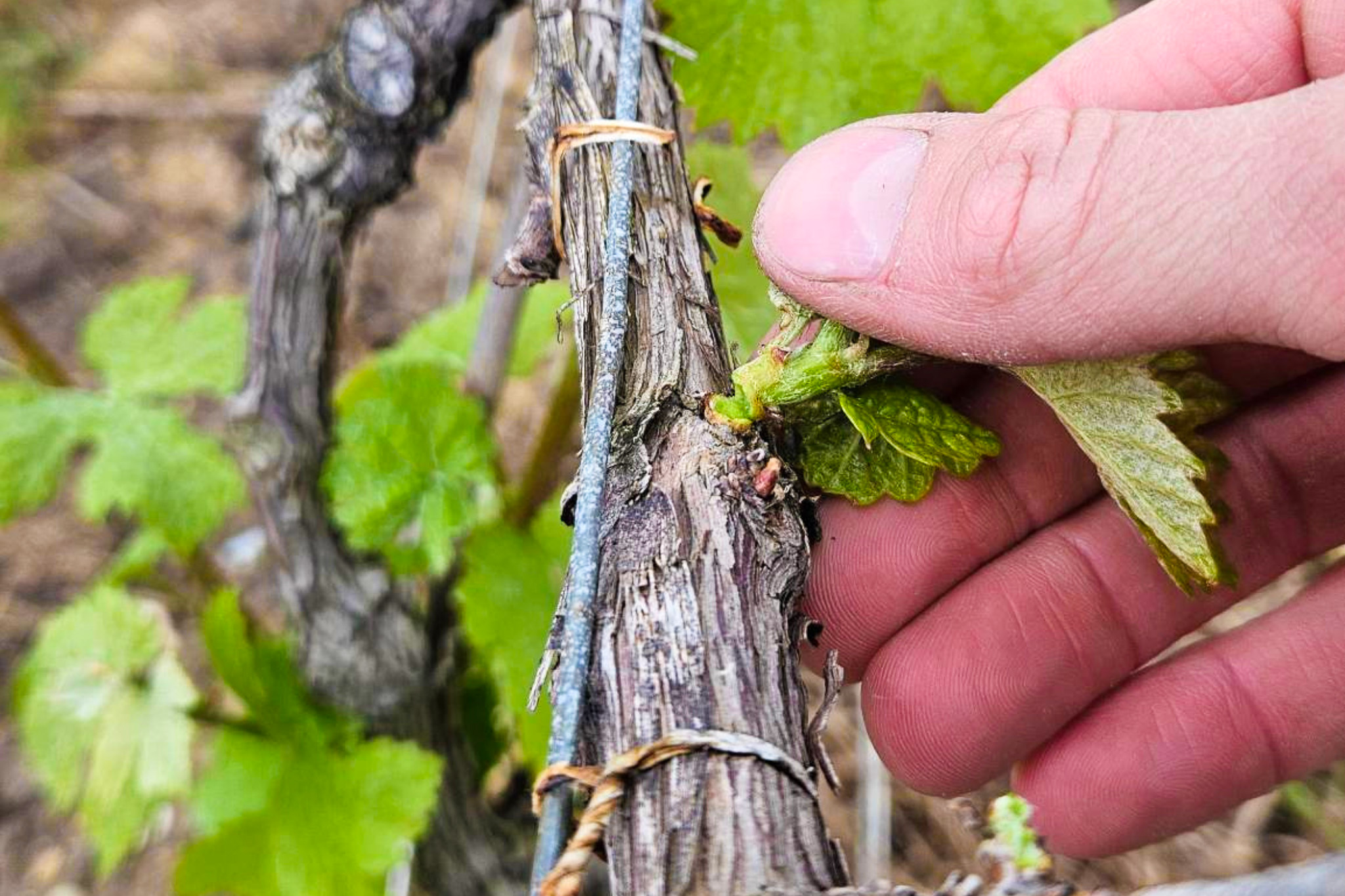
This work generally begins in May. This stage consists of removing all the so-called ” suckers” shoots, those that are non-fruitful shoots, and that grow on the old vines. It is important to quickly select and remove these shoots as they risk diverting the sap from the main shoot. This task is again done entirely by hand.
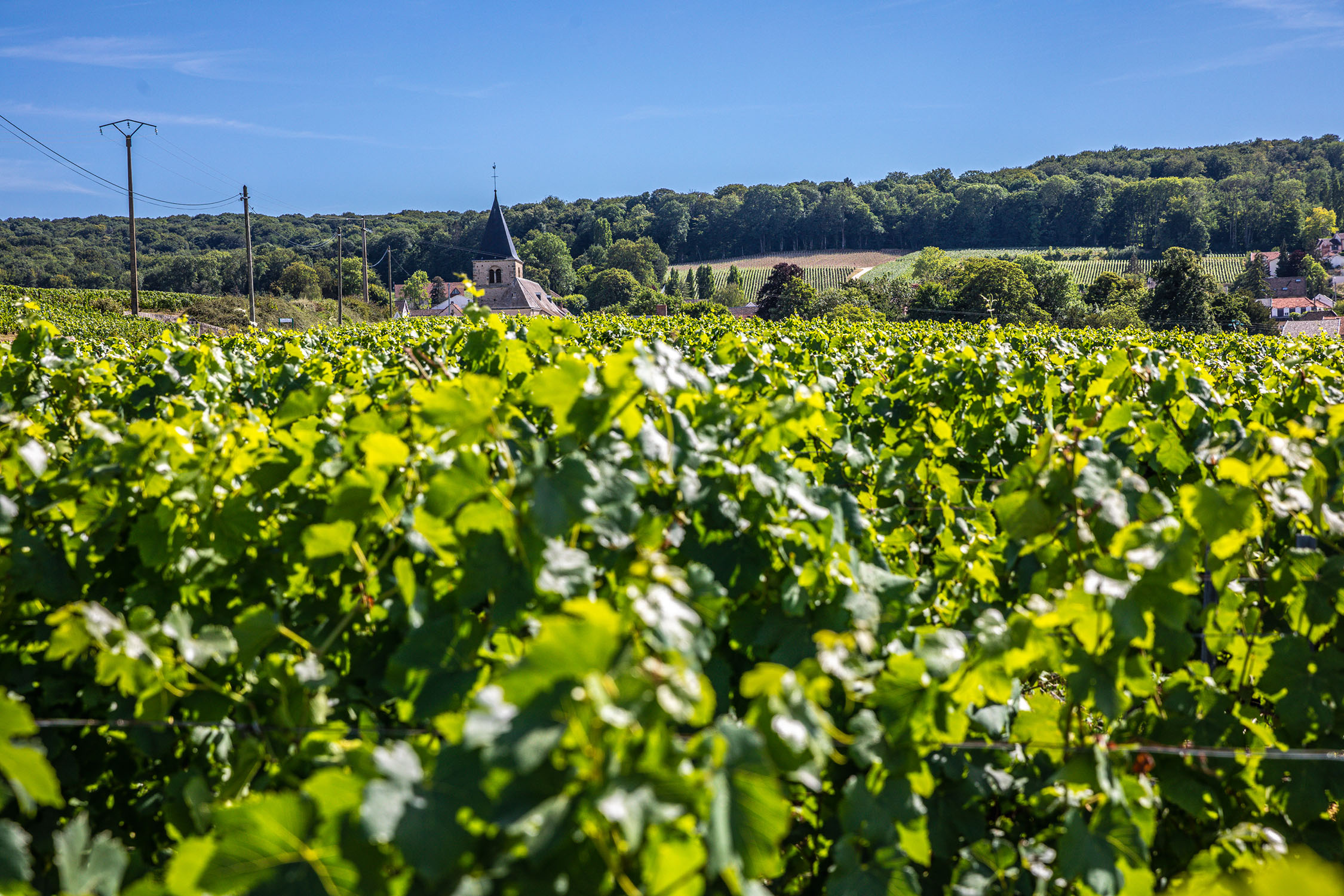
After the desuckering, the branches of the vine grow to about 50 cm. The next step after this growth is the “lifting”: by means of lifting wires, the branches are lifted and maintained in a vertical position. This architecture allows for the passage of men but also to prepare the trellising.
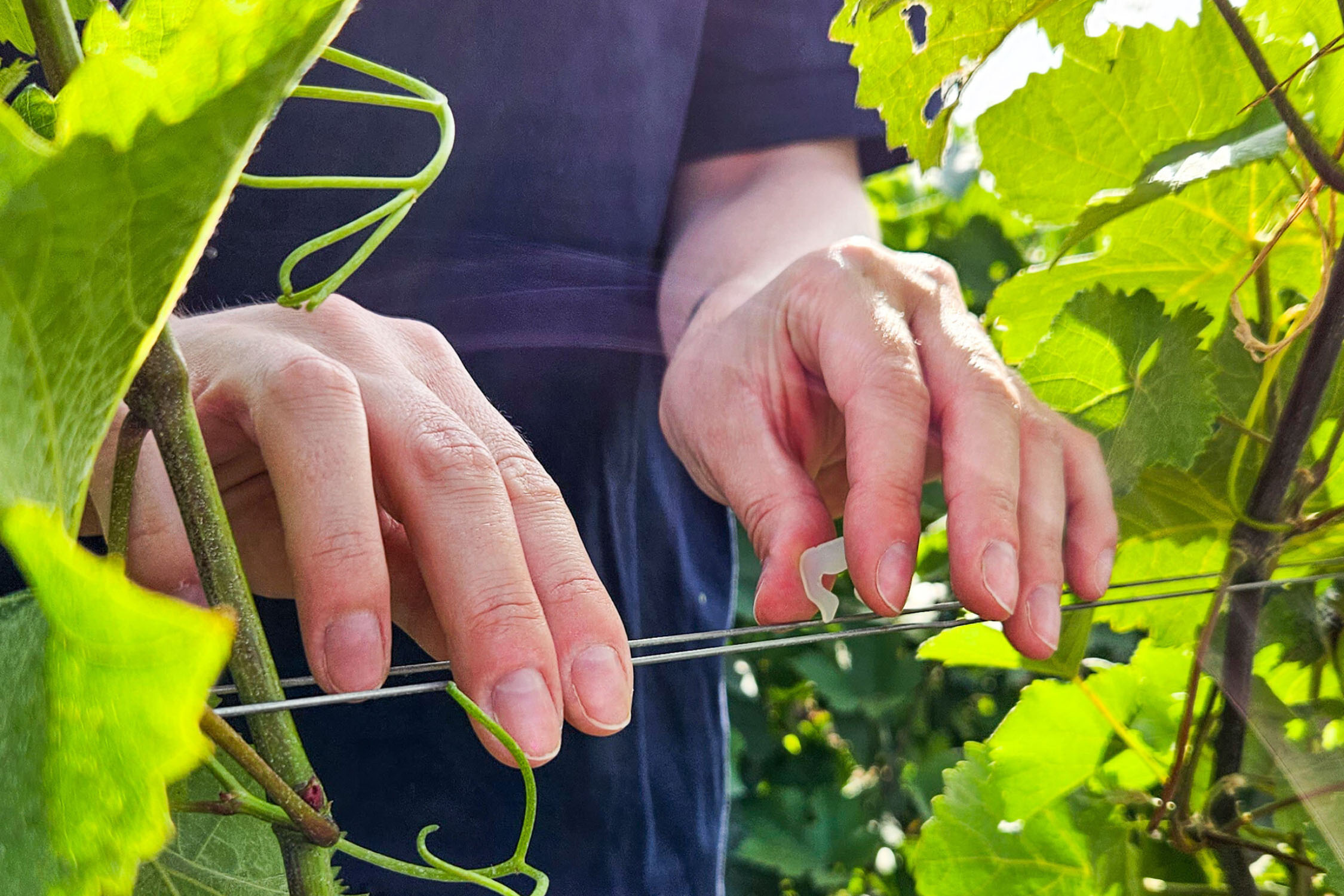
The trellising is a fundamental stage for the vine in Champagne. This work begins in June and is done entirely by hand. It lasts a long time because it consists of separating the shoots from each other and positioning them correctly with the help of wires and staples so that the vines are not packed together, so that they catch as much sun as possible and benefit from good ventilation, thus avoiding rotting. All of these features once again promote the growth of quality grapes.
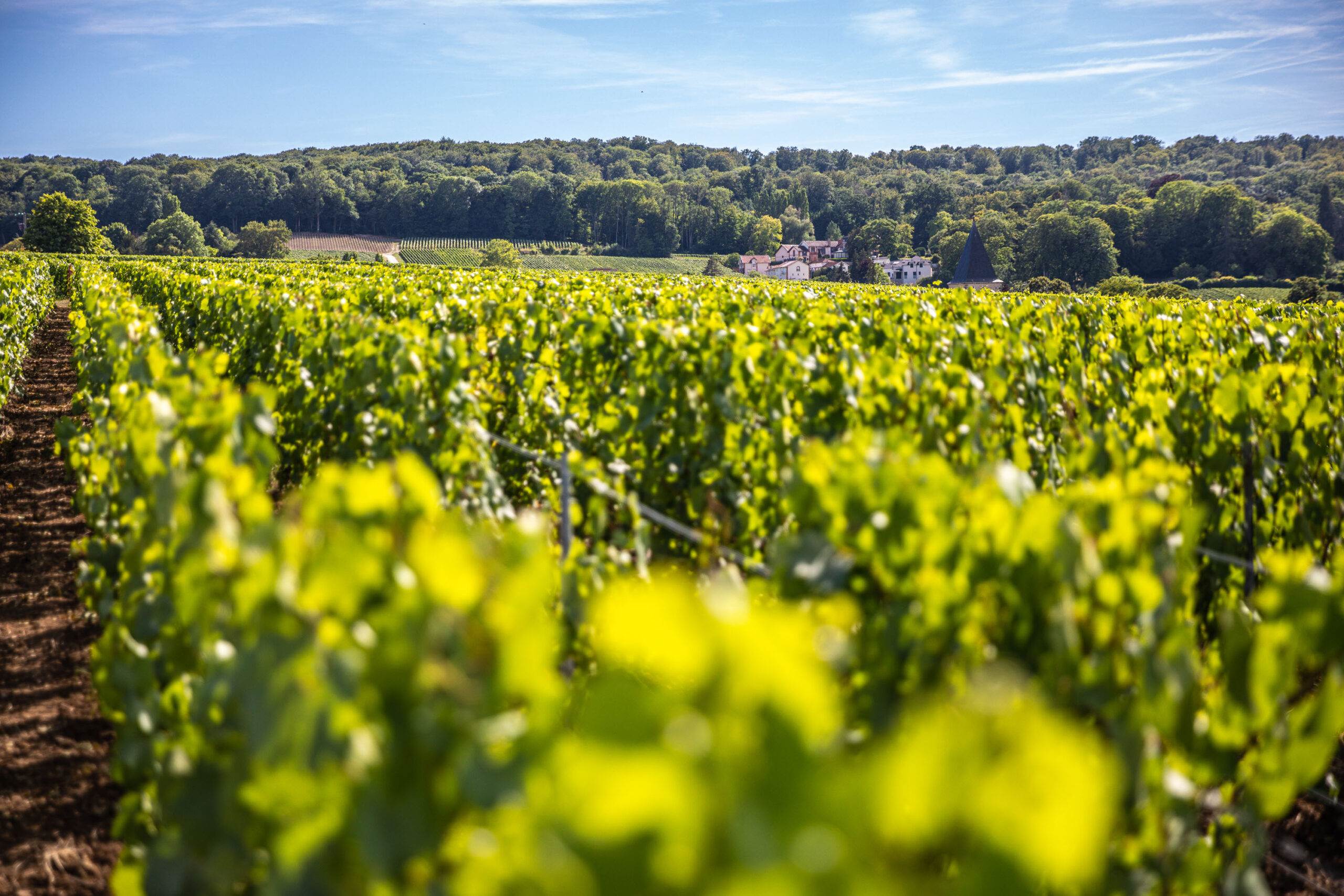
Trimming starts at the beginning of July and lasts until the harvest. This step is the continuation of the trellising and is essential in Champagne. It consists of slightly pruning the top of the vine’s branches and their sides so that the fruit can capture a maximum amount of sunlight for its growth, while retaining enough vegetation to avoid sun’s damage.
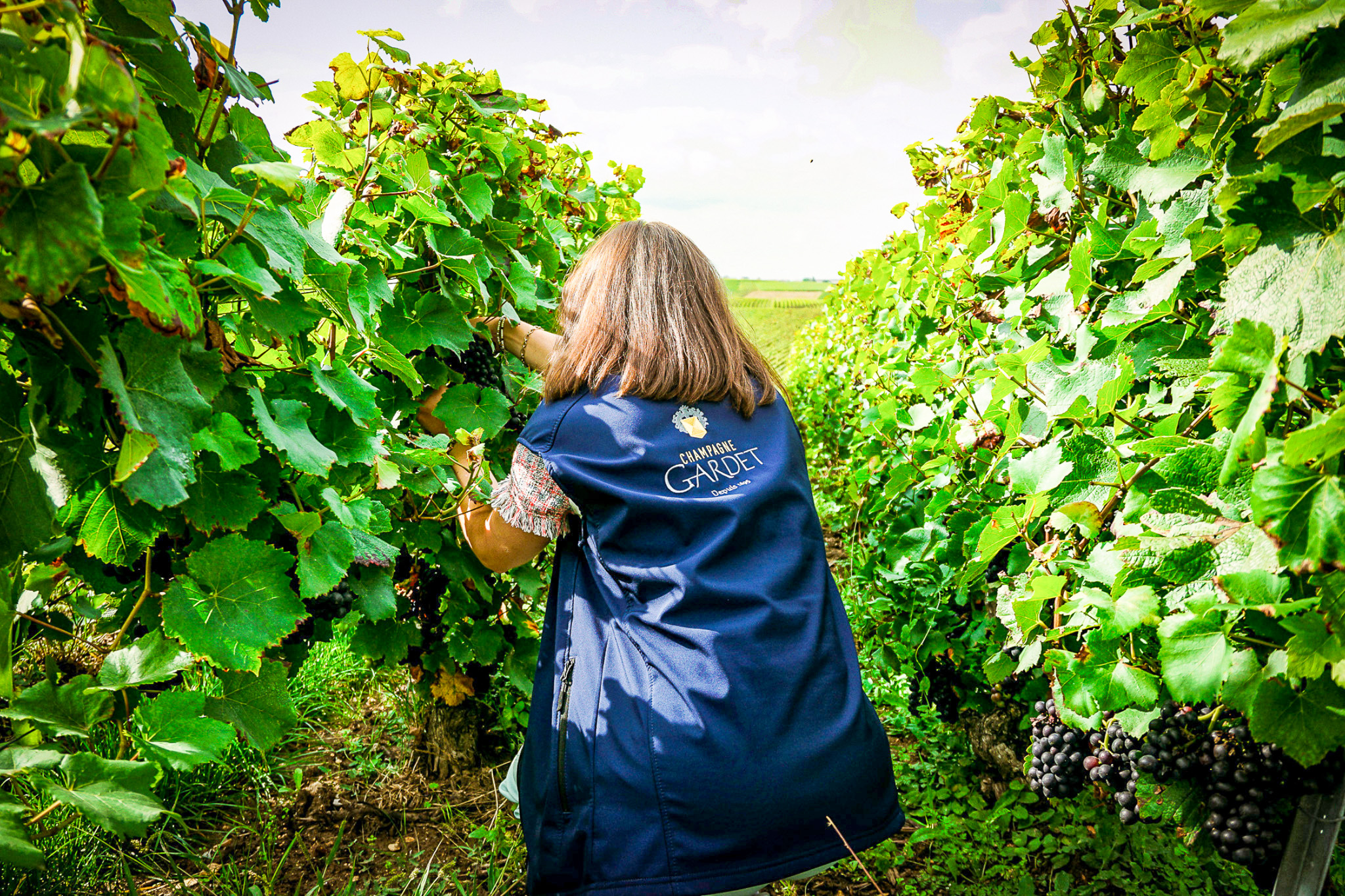
Each harvest is different, we never find the same maturity of the grapes, the same degree of acidity or degree of alcohol. This is why the starting date of the harvest is never fixed in advance, it is the observation of the vines that triggers the start of the harvest. It generally begins in September, but depending on the year, it can start at the end of August or the beginning of October. This is a major step in the wine-making process and is the culmination of almost a year’s worth of meticulous and well-considered work in each parcel to produce the best possible grapes. Harvesting in Champagne is only done by hand and the yield is imposed as part of the AOC regulations. Finally, the bunches of grapes are picked and transported to the presses, where they are transformed into the divine nectar that is Champagne.
In order to maintain the quality and character of its champagnes year after year, Champagne Gardet takes advantage of the latest technological innovations in order to control each parameter of the champagne vinification method. A key stage in the transformation of the fruit into divine nectar, the vinification process is adapted according to the cuvées to obtain a champagne that is all the more authentic.
The entire range of champagnes is made in the most traditional way, using only “cuvées” (first press juice). The greatest care is taken to produce high quality products by allowing the champagnes to age on their lees in the vaulted cellars for as long as possible, at least 3 years for the Tradition Collection, 5 to 9 years for the Extra-Brut Collection more than 15 years for the Prestige Collection (well beyond the legal obligation) and by being one of the rare Houses to still use oak barrels for the ageing of part of the reserve wines.
« Our Champagnes have strong personnality, a characteristic marked with both maturity and modernity that I am determined to preserve. I see myself as the guardian of a precious tradition, but a resolutely modern guardian who wants to convince even more champagne lovers of the exceptional quality of Gardet wines. »
Stéphanie SUCHEYRE,
Oenologist of Champagne Gardet.
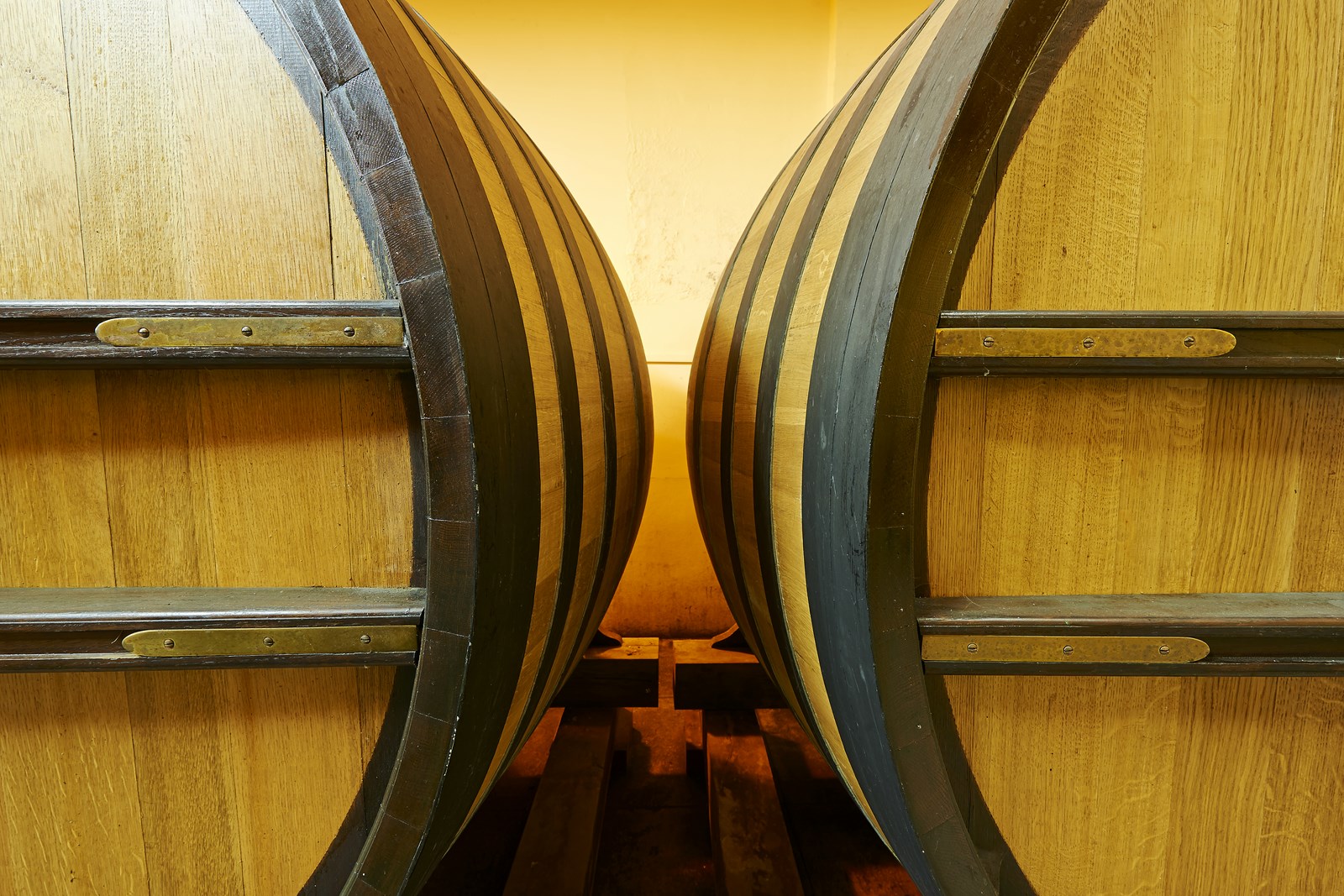
Equipped with a modern winery composed of stainless steel tanks, Champagne Gardet also keeps its ancestral barrels in its cellar. They are made out of oak from l’Allier, their capacity varies between 25hl and 40hl and their age goes from 50 to 100 years for some. These barrels are used for ageing reserve wines and certains vintages. This maturation in oak cask allows the wines to gain in richness and aromatic complexity. Finally, each Gardet champagne receives a small quantity of these reserve wines in the ‘expedition liqueur’, at the time of disgorgement. This is the “Gardet touch”.
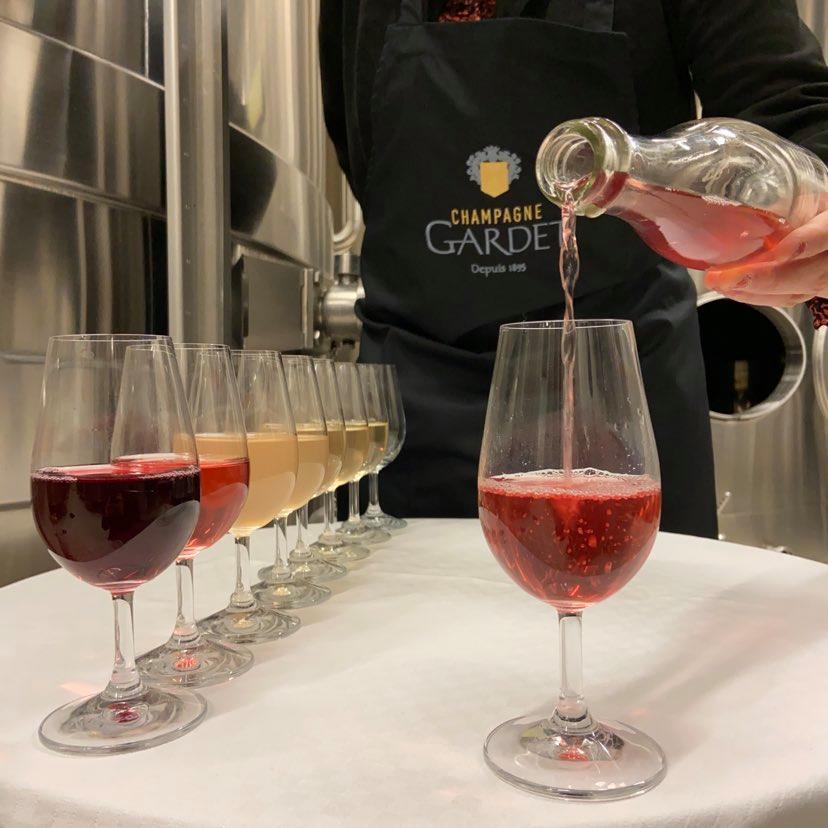
This is the most important stage in Champagne. The blending will give each cuvée its taste. Stéphanie, the oenologist at Champagne Gardet, tastes each wine in each vat and decides which wines will be combined to create the different cuvées (up to 60 samples are tasted). The oenologist then proceeds with the blending by mixing “still” (i.e. non-sparkling) wines from different harvests, for a consistent final taste. It is this step that gives the true “signature” to a champagne cuvée. Thanks to the blending, we can have a constant taste from year to year, the taste of the Maison Gardet. Then we proceed to the bottling where the sparkling wine is transformed into an effervescent wine, in the bottle resting in the cellar.
The true signature of Gardet Champagnes is the alliance between maturity and freshness of the wines. All the Gardet Collections are designed to reflect this unique character trait for the House. It is all the more present in certain cuvées for which the House’s oenologist has chosen a method that allows this style to be maintained, with a real thread: perpetual reserve. It is the opposite of vintage champagne, and consists of piling up the years one after the other in tuns or vats. At each racking, the wines of the current harvest year are mixed with the wines of the previous years, which makes it possible to preserve a consistency that we seek in the taste of the future champagne. Each year, the wines of the harvest are added to compensate for the wine that has been racked. This method allows the older wine to educate the younger. The champagnes thus regain their characteristics and aromas which are generally fleshy, greedy and deep. These wines are an invitation to go back in time, to go through the countless vintages that make them up, where the oldest brings maturity and the most recent allows the typical freshness of Champagne to be preserved.
Champagne Gardet offers two unique styles of champagne thanks to two perpetual reserves, one started more than 30 years ago in the tuns to constitute the Selected Reserve cuvée. The other was started in stainless steel tanks in 2012, for the Prestige Charles Gardet Blanc de Blancs.
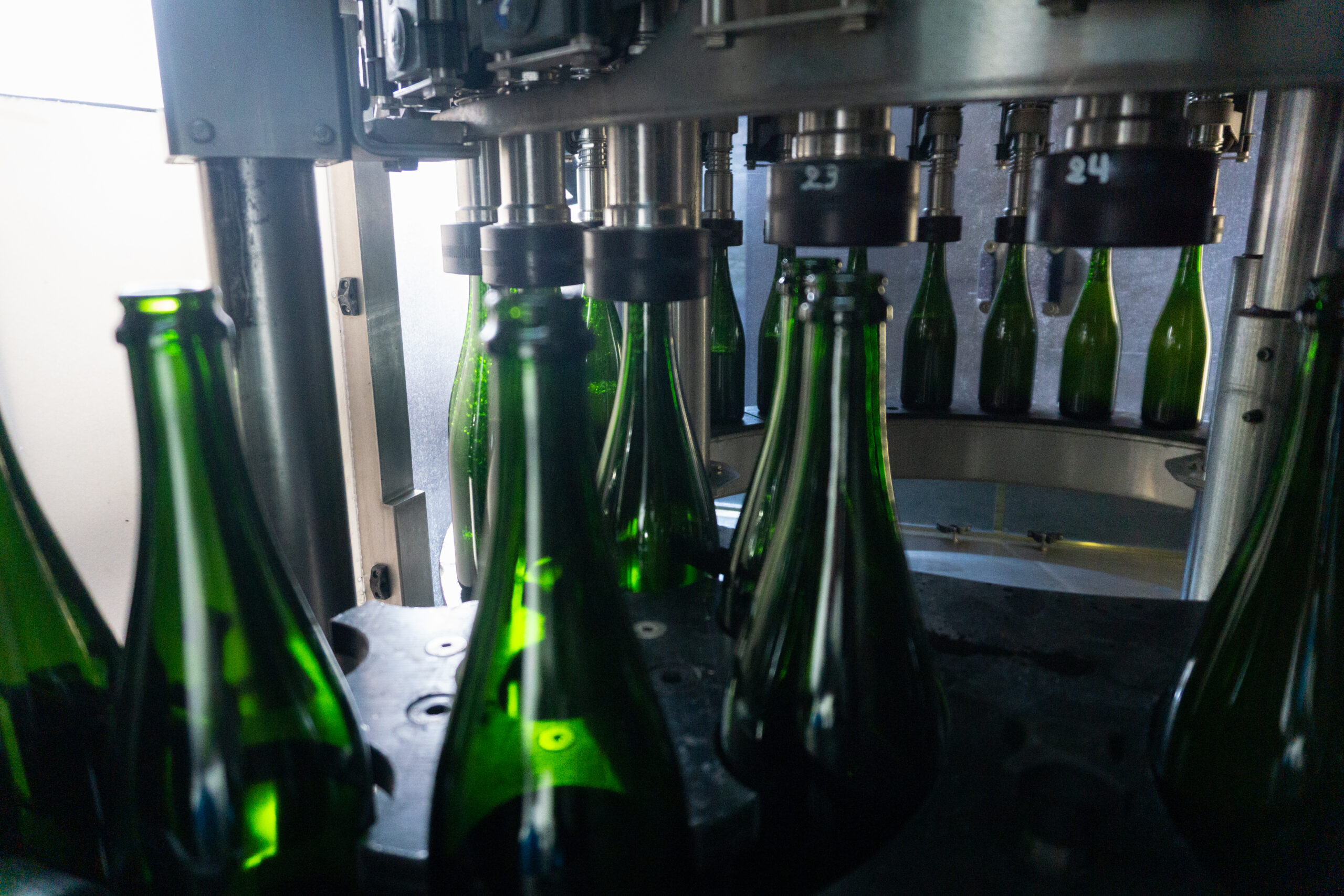
The bottling is the crucial stage of the bottling of the still wine for its setting of foam in cellar. Once again, Tradition and Modernity mix at Champagne Gardet, a mechanical chain is installed for the bottling, the bottling activates again the yeasts present in the wine, this action will transform the still wine into sparkling wine, in the bottle. The bottle is then sealed with a capsule and left to rest in the cellar until it has matured. For the tirage of the grands flacons, we carry out a manual tirage as these formats are produced in very small quantities. The Grands Flacons are then closed directly with a cork and taken down to our cellars to continue the bubbling process and begin the ageing of the wine, directly in the container! Champagne Gardet is one of the rare Houses to age wine from bottle to Methuselah directly in the container.
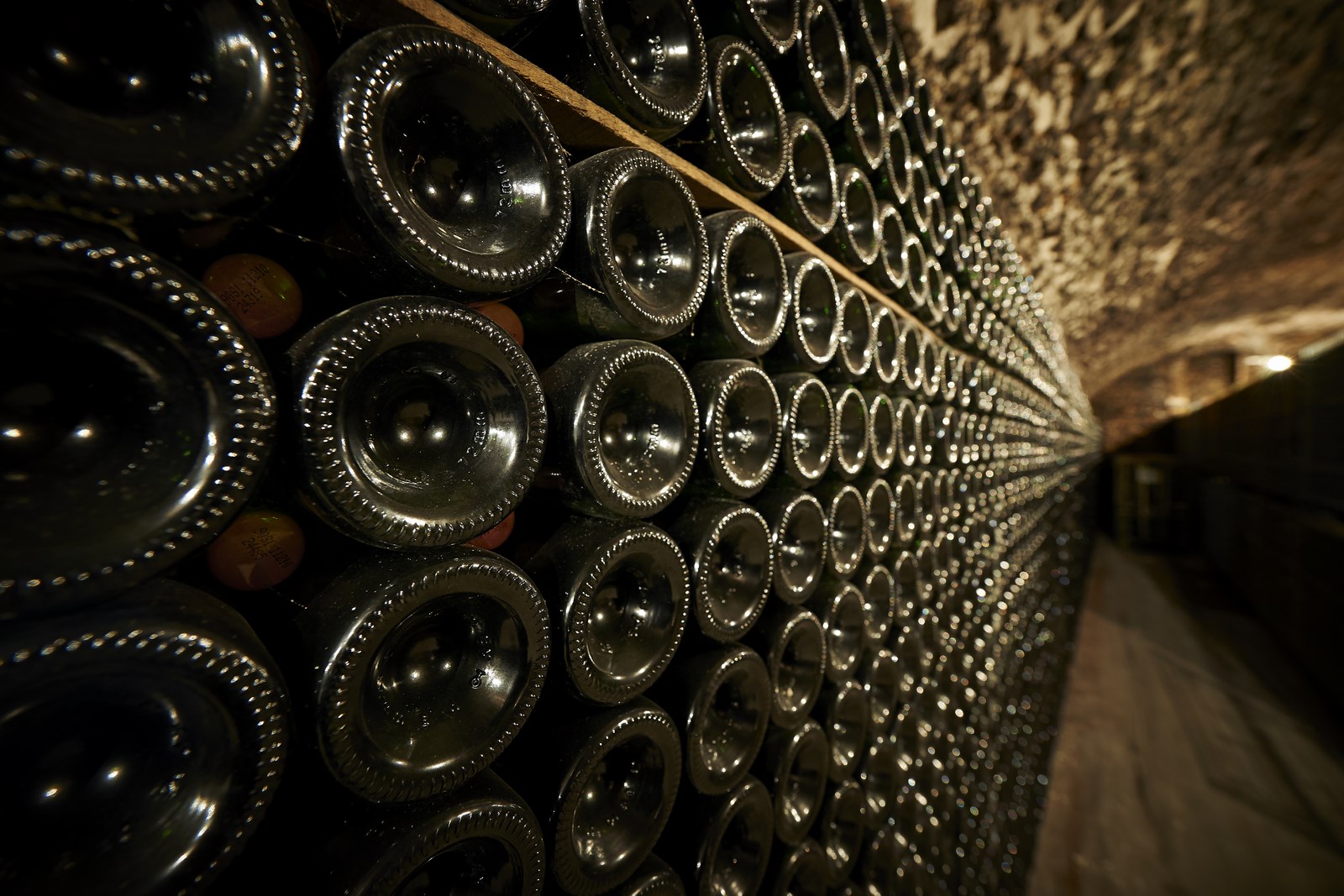
The bottles are kept “on laths”, thin layers of wood, horizontally. Legally, the wine must rest for 15 months to make a ‘non-vintage’ Champagne, and 36 months for a Vintage (a vintage = the juices of a single year). Here at Champagne Gardet, the wine ages longer: 3 years for the ‘non-vintage’, and 8 to 15 years for the Vintages. During the ageing process, the exchanges between the deposit and the wine continue and give the champagne a more mature taste, the bubbles are also finer. The ageing is done directly in the bottles and in the style of the House, on laths.
“This culture of ageing is very important to us. The result is champagnes with a style that is voluntarily vinous but fresh, made for ageing and gastronomy”, explains Olivier Legendre, General Manager. “We firmly defend the idea that champagne should be drunk at the table, throughout the meal, with multiple possibilities of pairing, from the aperitif to the dessert, including of course the cheese.
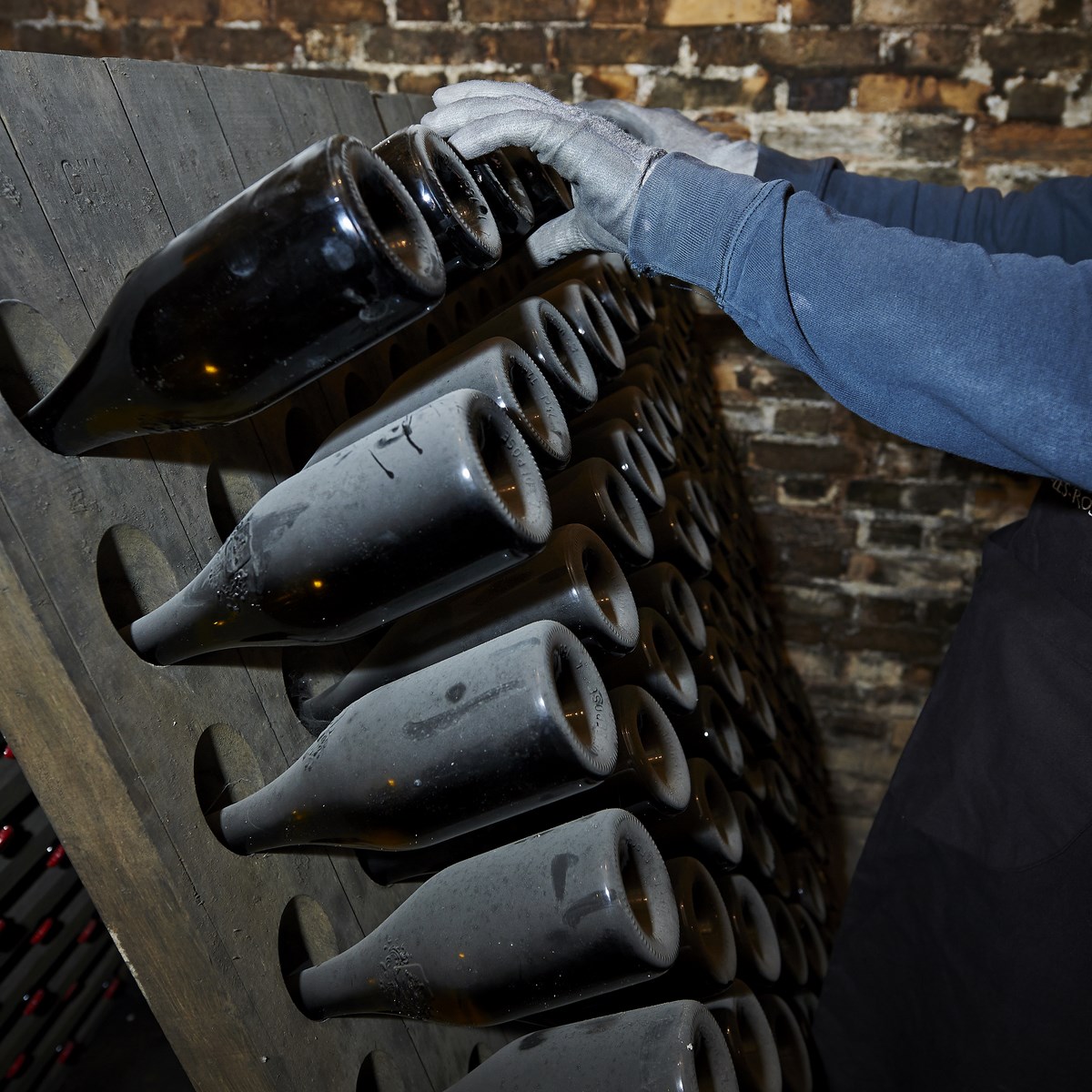
After having rested for a long time in the cellars, the champagne must regain its clarity by eliminating the deposit that has formed during the ageing process and following the formation of the foam. To do this, tradition meets modernity at Champagne Gardet, where two methods are used: The first one, using tradition in the rules of the art, with riddling on a desk which consists in turning the bottle by 1/8 or 1/4 of a turn, to the left or to the right, while progressively straightening it from the horizontal to the vertical in order to draw the deposit into the neck of the bottle. Or the second, which advocates authenticity rediscovered in modernity, with mechanised stirring thanks to a machine that can stir metal cases containing 504 bottles: the “gyro-pallet”. This technology works 24 hours a day, and allows the bottles to be stirred more quickly, and all this without impacting on the quality of the wine.
Champagne Gardet is once again combining this ancestral method, for the riddling of its Prestige bottles and its large formats, with the mechanised method in order to offer its emblematic champagnes by taking advantage of the best of both methods.
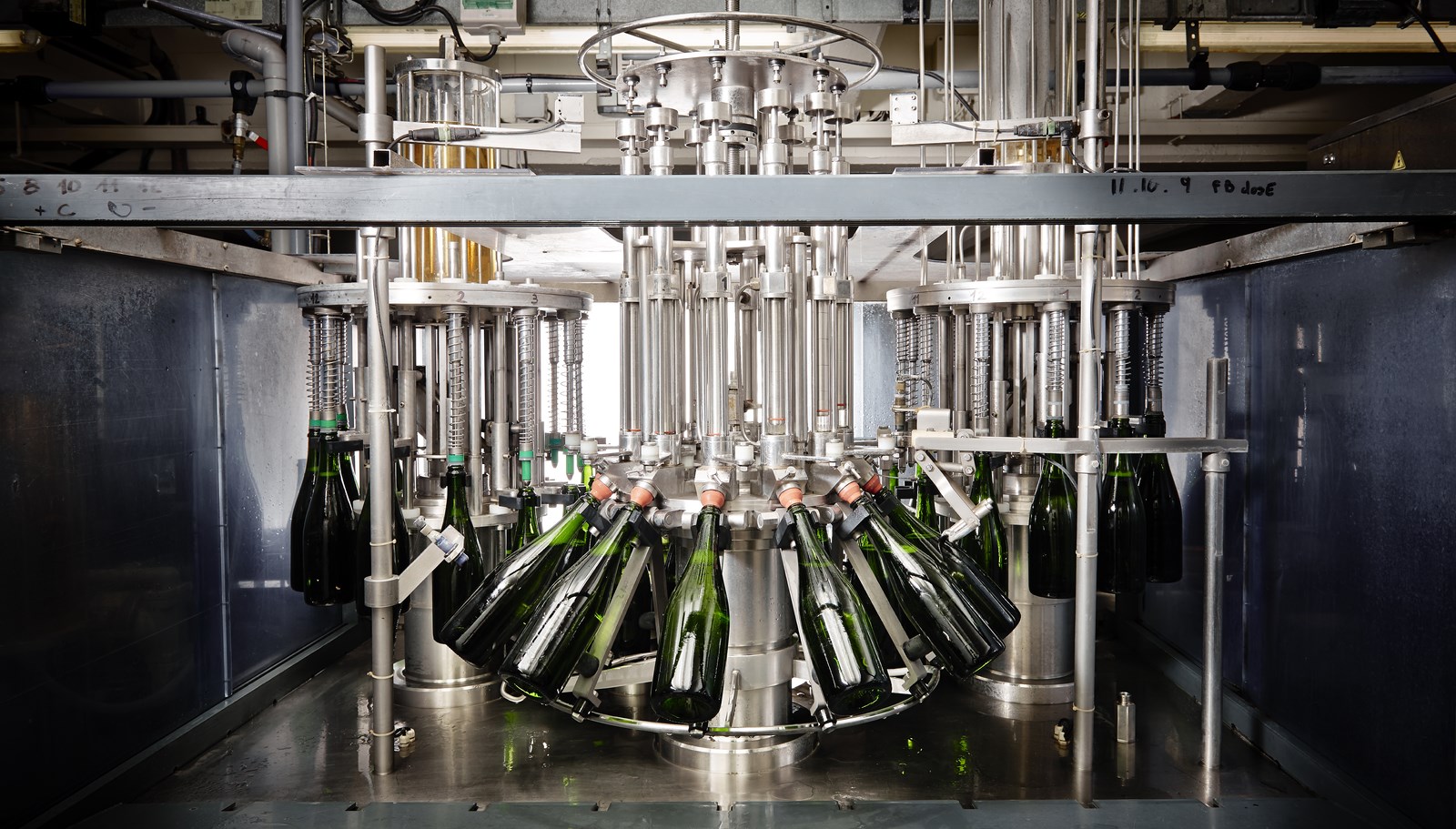
After years of resting in the secrecy of the cellars, it is time for the Champagnes to move on to the next stage: Disgorging. This stage of disgorging consists of removing the yeast deposits that have been progressively brought back into the neck of the bottle during riddling. To do this, the neck of the bottle is placed in an ice bath at -27° for a few minutes so that the deposits are trapped in an ice cube. Then the bottle is opened and the natural pressure in the bottle expels the ice cube and the deposits with it. The authentic know-how of the “à la volée” disgorging method may seem very simple, but in reality it requires rigour and extreme precision in the gesture. To disgorge a bottle on the fly, simply put the bottle upside down and remove the cork quickly by straightening it, the pressure will evacuate the deposits trapped in the neck of the bottle. This gesture requires a lot of know-how and experience because the deposits must not mix again in the bottle, at the risk of losing all those weeks of riddling, the gesture must be fast and controlled in order to lose a minimum of wine…
After disgorging, the “liqueur d’expédition” or “liqueur de dosage” is added. This liqueur is made from the old reserve wines kept in the tuns and pure sugar.
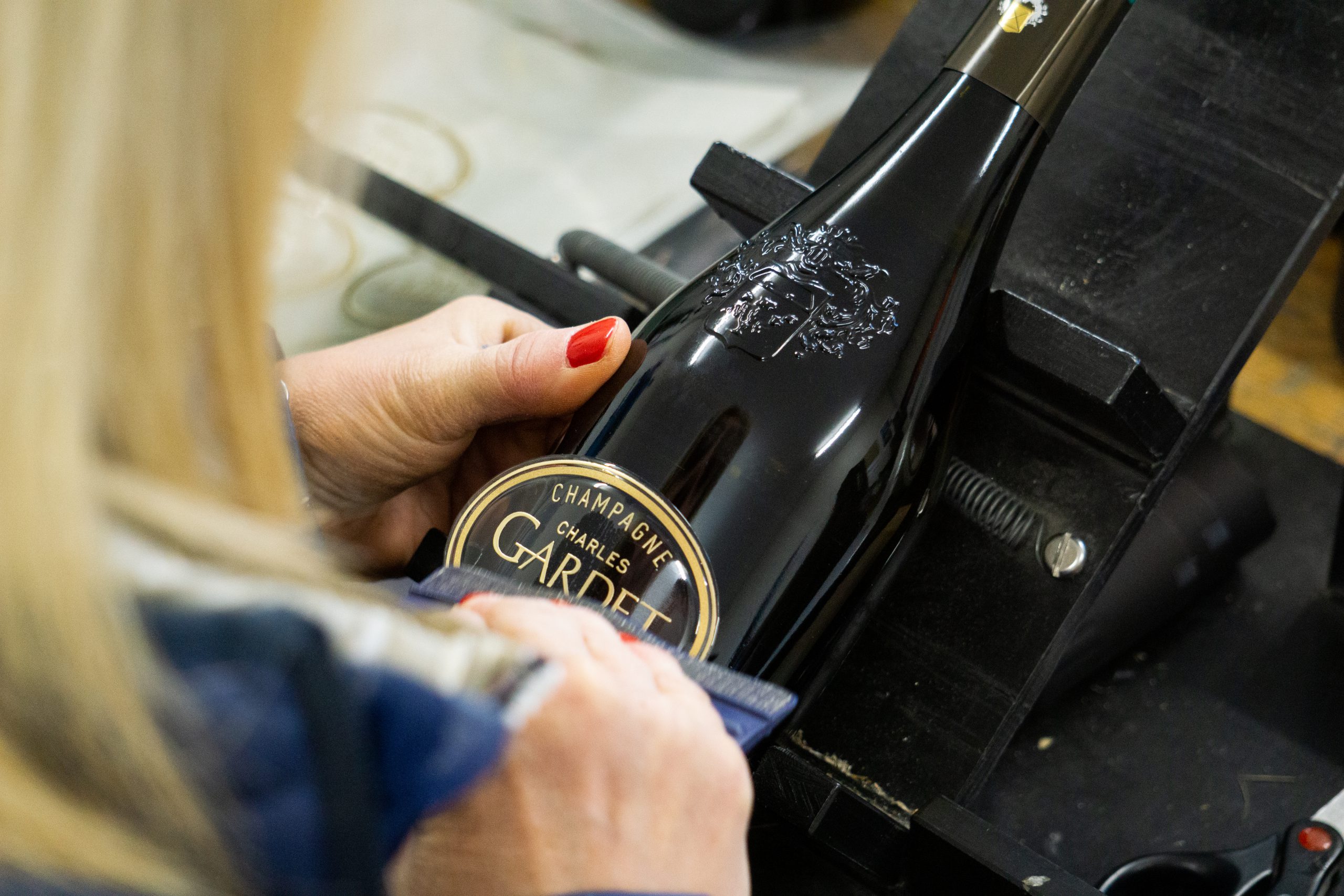
Like a custom-made creation, the Prestige Collection finishes its vinification with a customised, hand-made dressing. For the other ranges of the House, the dressing is mechanical to ensure precision and rigour and to propose a constant aesthetic.